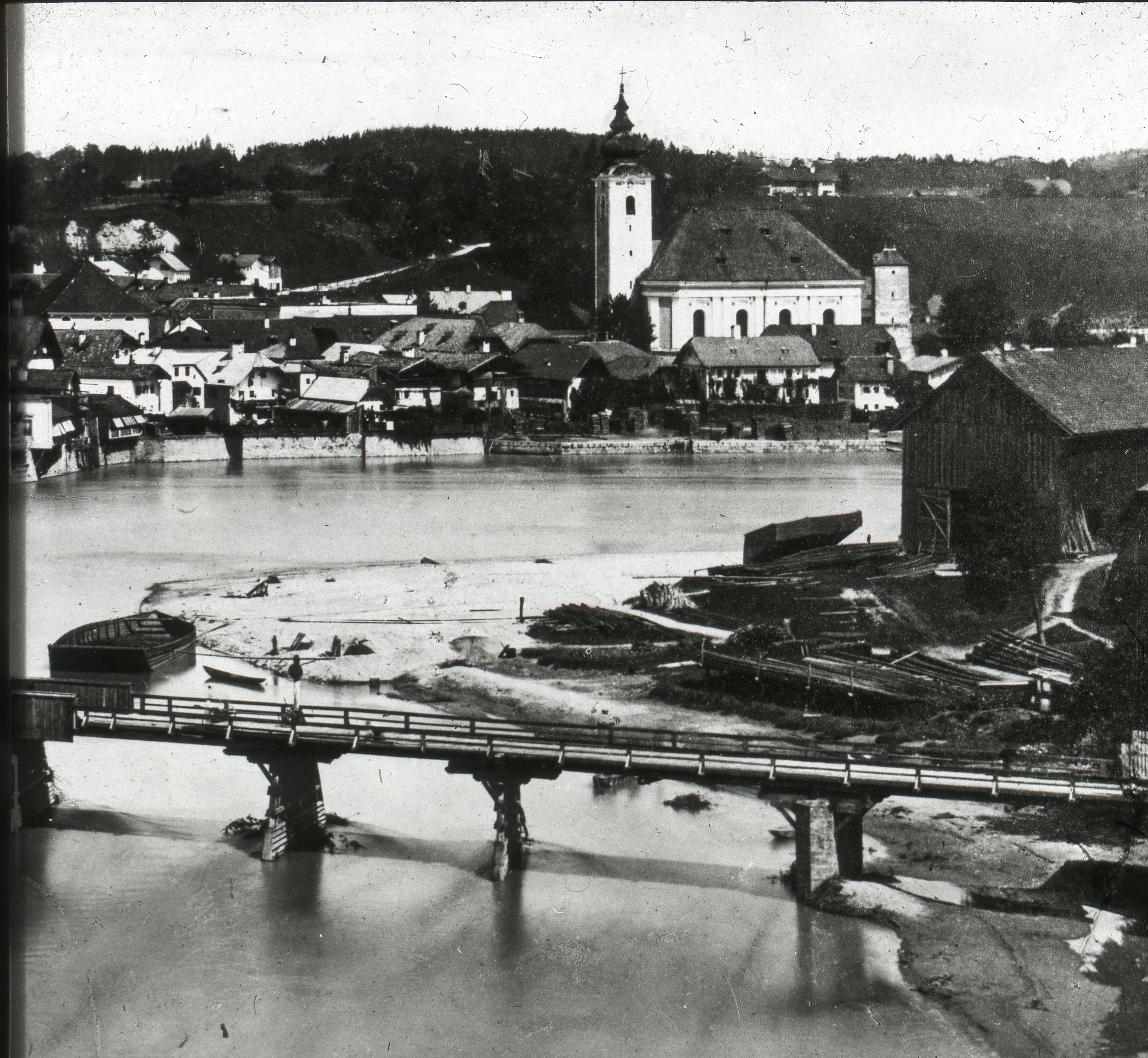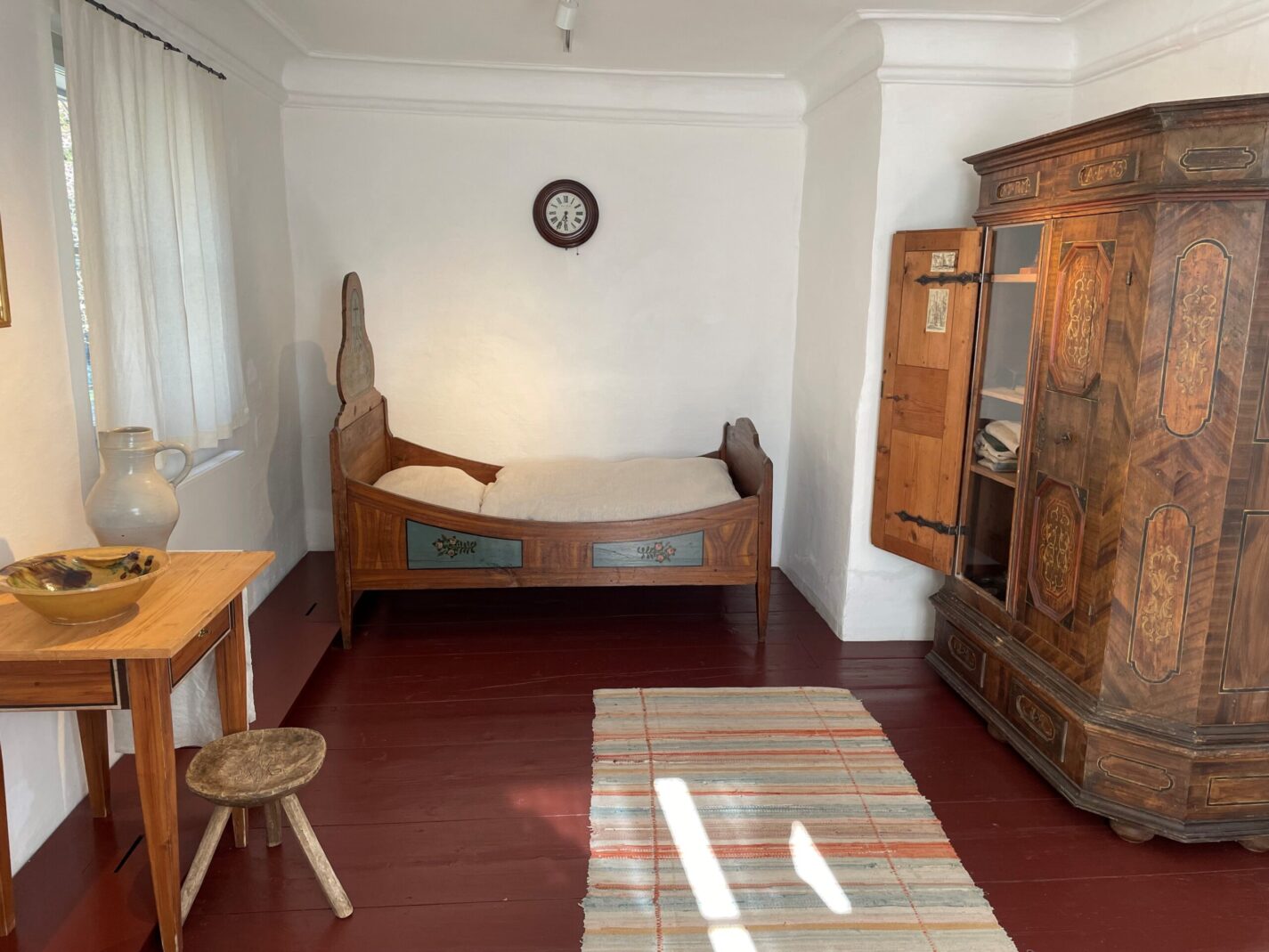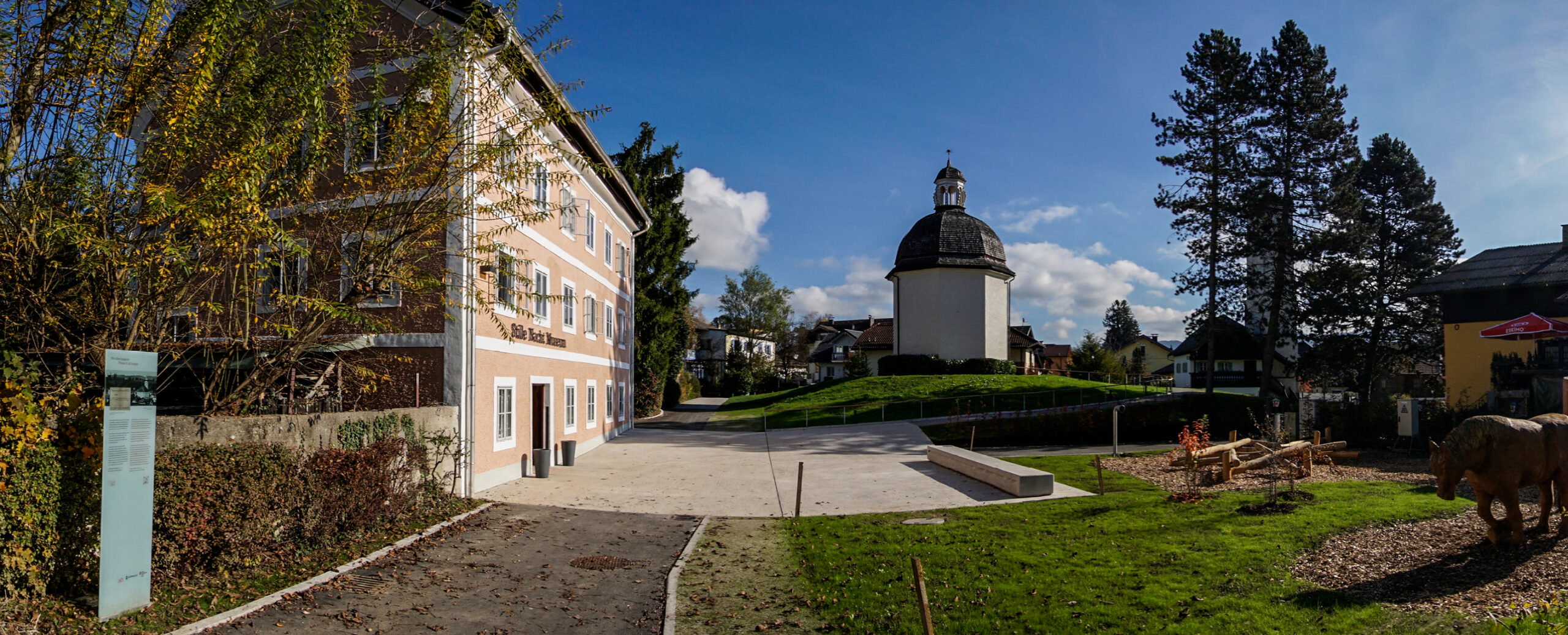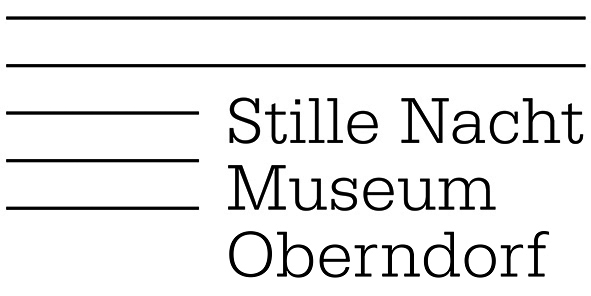December 24, 1818 is a memorable date: In the evening, the song Silent Night, Holy Night was sung for the first time by Joseph Mohr and Franz Xaver Gruber in Oberndorf. The audience consisted of Oberndorf’s Salzach boatmen, who had come to Christmas Mass at their patron saint’s church, St. Nikola Church on the right bank of the Salzach River. They had difficult years behind them, marked by war and poverty.
The idea of presenting the song and its history at the site of its first performance was the concept behind the Silent Night Museum in Oberndorf. Two floors in the old sexton’s house next to the Silent Night Chapel are available for this purpose. Joseph Mohr lived in this sexton’s house during his time as an assistant priest in Oberndorf.
The first floor of the museum showcases Joseph Mohr’s connection to the Oberndorf boatmen, the lives of the boating families, and the significance of Salzach River navigation. The second floor focuses on the time of the song’s creation, the evening of its first performance, and its subsequent spread. The meaning of the lyrics is addressed, as well as its distortions and reinterpretations under various political regimes, along with the song’s message of peace. The exhibition extends to the millions of people today who sing the song not only at Christmas time.
The immersion into the origin story and life during that period is enriched with many multimedia stations. A karaoke station allows visitors to experiment with different musical and linguistic versions. Several interactive stations on both levels invite children and adults to discover, solve puzzles, and listen to stories. The museum’s courtyard is dedicated to Oberndorf philosopher and alternative Nobel Prize winner Leopold Kohr. In the attic, there is an educational space available for workshops and school classes.
Museum highlights

Harmonium
from the old sacristan’s house
According to oral tradition, the harmonium stood in the still-preserved sexton’s house, where assistant priest Joseph Mohr lived with the sexton.

Photographs
Insights into the photo archive
The black and white photo shows a view of the old boatmen’s settlement on the banks of the Salzachknie. The comparison between the water tower and the church of St. Nicola illustrates the size of the old boatmen’s church. The Schopperstadl (boat building) can be seen on the opposite bank in Laufen.

Joseph Mohr’s living room
Views of the bedroom
Joseph Mohr lived in this small room during his time as an assistant priest in Oberndorf.
It is a simple room. With simple furnishings that are reminiscent of that time or even originate from that period.

Nahui, in Gotts nam! (Well then, in God’s name!)
Boatmen
“Well then, in God’s name!” With this boatmen’s call, the salt shipping journey from Hallein to Oberndorf began.
The transport of expensive goods such as marble, wine, and especially salt was the livelihood of the Oberndorf boatmen.
Prices
Silent Night Museum
Route
Stay on the B156 until the roundabout Oberndorf (next to the “Lagerhaus”) and take the exit “Oberndorf”.
At the next roundabout, cross straight ahead and drive down the hill aloing the “Salzburger Straße” .
Keep following the street until the restaurant “Bauernbräu”. Turn right at the restaurant into the “Schöffleutgasse”.
The parking lot is located on the left side in immediate proximity to the museum.



